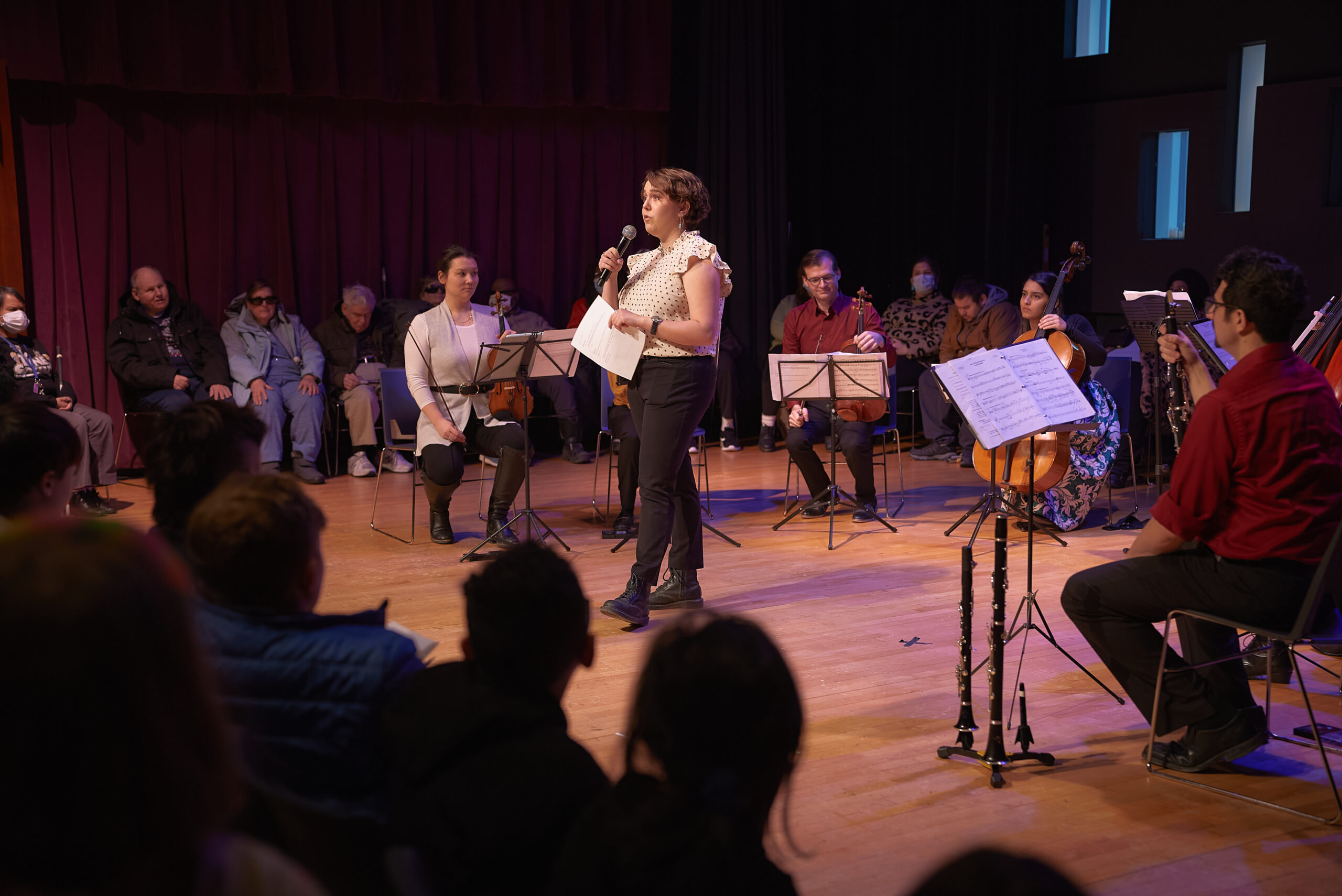Welcome to our new series of quick, data-driven research briefs, created in partnership with I/O Research. Each brief takes a closer look at what national datasets reveal about the arts sector and what sets the Midwest apart.
We’re starting with the 2023 American Community Survey data from the U.S. Census Bureau, which offers insights into people whose primary job is in the creative sector.
Let’s dive into the data to better understand who is working in the arts, what they do, where they live, and how they’re making it work in the Midwest.
Explore the Data Set on Arts Analytics
Play with the 2023 American Community Survey findings on I/O’s new platform that lets users experience the art of data.
Visit Arts AnalyticsFirst, who counts as a Midwestern artist?
For this brief, we’re defining the Midwest as Illinois, Indiana, Iowa, Michigan, Minnesota, North Dakota, Ohio, South Dakota, and Wisconsin.
The data includes people whose primary job is in a creative occupation—like designer, musician, or writer—based on how they describe their work in the American Community Survey. It doesn’t include those who create art on the side, work across multiple fields, or are between gigs.
In other words, the region’s full creative footprint is likely much larger than what’s shown here.
Still, this data provides a solid starting point for understanding the core of the Midwest’s artistic workforce.
How many artists live in the Midwest?
About 1.0% of the Midwest workforce—roughly 609,000 people—report working primarily in the creative sector, compared to 1.3% nationally.
That’s a small difference. And among workers under 30, the gap nearly disappears.
This suggests that younger creatives are just as likely to build careers in the Midwest as elsewhere. Or, it may reflect that younger artists are more likely to hold multiple jobs or pursue creative work part time, which this dataset doesn’t capture.
What kinds of artists live in the Midwest?
The Midwest is home to a wide range of artistic occupations.
- Writers, authors, and editors make up around 16% of the region’s creative workers
- Graphic designers account for about 13%
- Photographers make up roughly 9%
Compared to the rest of the nation, the Midwest has fewer actors, directors, and entertainment-related roles, careers that tend to cluster in major coastal media hubs like New York or L.A.
Instead, the region has a slightly higher share of graphic designers, writers, and artists.
This points to a creative workforce grounded in design, visual storytelling, and self-directed work, fields that thrive in a wide range of communities.
Here’s how the Midwest’s creative occupational breakdown compares to national percentages.
Remember: these numbers reflect primary occupations only. Many Midwesterners may be “musicians by night” or “painters on weekends.”
What do Midwestern artists earn?
On average, Midwestern creative workers earn about $40,000/year, compared to $47,000 nationally.
But when you adjust for cost of living, Midwest artist incomes are nearly identical to artists elsewhere in the U.S.
And when we zoom out to look at household income, creative workers in the Midwest come out ahead—with household earnings over $100,000/year on average.
This household earnings number is higher than the national median for all individuals ($93,000) and Midwest non-artists ($89,480).
This suggests that the artists represented in this data may share income with spouses, partners, or other family members with high-paying occupations outside the arts.
What do their families look like?
Most Midwestern artists live in small households. Two-person households are the most common (36%), followed by single-person households (23%).
Compared to the general Midwest population, artists are more likely to live alone or in smaller family units, similar to national artist trends.
While most Midwestern artists don’t have children at home (67%), they are slightly more likely to have children than non-artist peers in their region. And among those who do, one or two children is the norm. Larger families are rare.
What kind of homes do they live in?
Midwestern artists tend to live in larger homes than artists in other parts of the country, thanks in part to the region’s relative housing affordability. Only 7% live in one-bedroom homes, compared to 10% of non-Midwest artists.
That said, compared to non-artists in the Midwest, artists occupy slightly smaller homes overall—a trend that may reflect income differences or lifestyle preferences.
Still, it seems that being in the Midwest gives many artists more space to live, work, and create.
What are the advantages of living in the Midwest for artists?
- Lower barriers: Shorter commutes, lower rent, and less competition for space may make it easier to launch a creative career or take risks.
- Strong local markets: Demand for design, photography, writing, and digital services exists in both rural and urban communities outside of the coasts.
- Affordable space to grow: Many artists can afford larger homes or studios, fueling both family life and creative experimentation.
- Access to clients anywhere: Thanks to remote work and digital tools, artists can build national (or global) careers while living in smaller towns or cities.
Our takeaways?
The Midwest offers a distinct kind of opportunity for artists, grounded in (relative) affordability, flexibility, and creative independence.
While the region has a slightly smaller share of the national creative workforce and fewer roles in entertainment industries, it punches above its weight in design, writing, and self-directed artistic careers.
Lower costs, larger homes, and strong local markets help artists make it work, even without the help of coastal media hubs.
Together, these conditions make the Midwest a quietly powerful place to live, work, and create as an artist.
